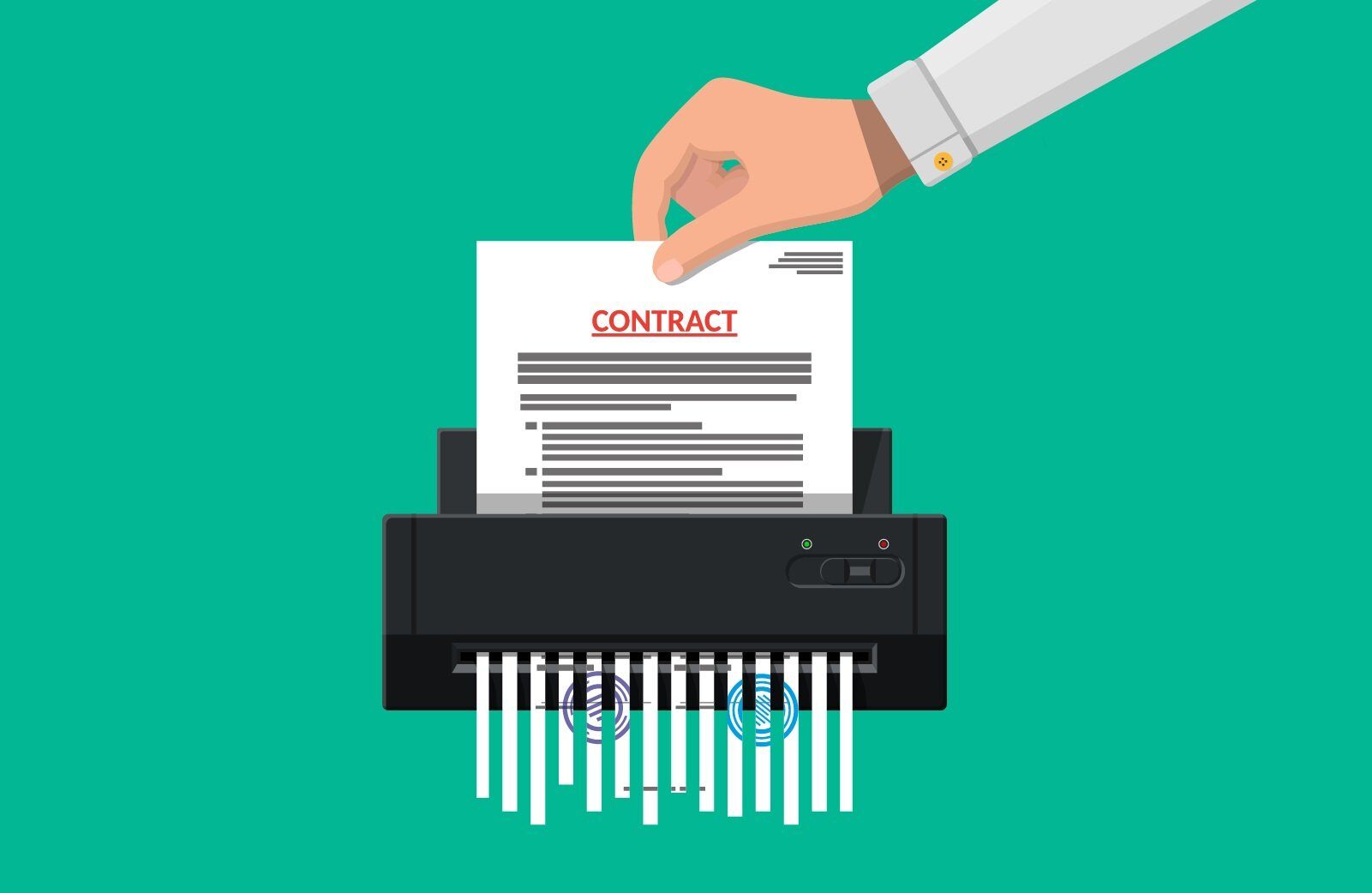We’ve all experienced it at one time or another: a once-promising vendor relationship has suddenly (or perhaps, not so suddenly) gone sour. Whether it’s due to repeated SLA failures, a lack of internal or external communication or other performance issues, sometimes there’s nothing left to do but find an exit. And sometimes, that’s not as easy as it sounds.
So, how do you extricate yourself from a vendor contract that’s no longer serving your organization well?
Start by Revisiting Your SLAs
Remember, your service-level agreements (SLAs) define the level of service expected by your organization from a vendor. We have SLAs to establish how the product or service is to be measured and the remedies or penalties (to include termination for repeated failure), if any, for non-compliance with the agreed service levels.
So, for example, if your vendor isn’t fulfilling their end of the bargain as agreed upon in the contractual SLAs, exiting the relationship may be as easy as pulling up the vendor contract and referring back to their contractual obligations.
This is why it’s so important to make sure the SLAs clearly state the metrics and responsibilities and expectations. This way, in the event of issues, there is an objective measure that can be used to gauge compliance with the terms of the agreement. It ensures both sides have the same understanding of requirements.
Service level agreements provide your organization an opportunity to do the following:
- Outline expectations to the vendor during service level development
- Clearly set remedy and penalty targets for non-compliance with service levels
- Create a culture of high-quality service and accountability both internally and at the customer level
- Formalize duties and rights of each party
- Set benchmarks that each party expects the other to achieve
- Encourage vendor delivery and consistency of service
Before taking next steps, it’s important to review due diligence notes on the vendor relationship (this is why thorough due diligence is so important: without it, these kinds of decisions are infinitely more difficult.) For example, it’s crucial to have information around remediation or penalties enacted to correct behavior. What was the outcome of those remediation efforts? Additionally, what does the contract’s SLA state about repeated failures?
Explore Vendor Contract Termination Options
If SLA failures get to the point where penalties alone are not enough, remediation of the failures have not corrected the underlying issue and your business continues to be impacted, it may be time to take steps towards termination.
Here’s a few steps you can take to get the termination process started:
Step 1: Enlist the efforts of the appropriate team to review. Typically, this decision will need to be made by the appropriate management within your organization. In this event, it’s necessary to review clauses within the agreement that allow for the termination of the agreement due to performance issues. However, this all depends on the initial contractual language. If service levels, penalties or termination clauses were not negotiated properly, your organization could have little to no recourse other than requiring the vendor to correct the issues.
Step 2: Make a case. If the agreement allows for the termination for cause once all other remedies are exhausted or ongoing SLA failures, the next step, as with the agreement creation, is to bring together the various parties within your organization that will provide input into the impact and process of termination, these may include:
- Legal
- Line of business
- Compliance
- Information Technology
- Risk
- Information Security
Step 3: Provide formal notification. Once the impacts of the termination have been identified, then your organization’s legal counsel will move forward with formal notification to the vendor based on the provisions outlined within the agreement.
Step 4: Employ your vendor exit strategy. While some terminations will be straight forward due to the nature of the service (e.g., replacing telecommunications providers, ISPs or computer hardware vendors) a best practice is to have an exit strategy in place that outlines the potential impacts to your organization and customers since a simple termination to one vendor that is utilized across multiple divisions in your organization may have a larger impact than previously realized.
Pro tip: First, have a plan in place to replace the vendor or bring the function back in-house. Second, consider notice periods, transition and exit strategies and how data assets will be returned to your organization. Third, ensure the exit strategy takes into consideration both a gradual unwind and a sudden termination.
Unfortunately, sometimes certain relationships just can’t be repaired, and for the health of our organization, it’s time to terminate. But don’t forget, in order to protect our organizations in circumstances such as these, you must put in the hard work upfront. Do your due diligence not only in the beginning, but throughout the entire vendor relationship. Trust us, you’ll need proof of why and your attempts to rectify the situation should you need to enter into the termination process.
Know what to negotiate going into your vendor contracts to be more successful. Download the infographic.







.gif?width=1920&name=Sample-Graphic-Animation%20(1).gif)



